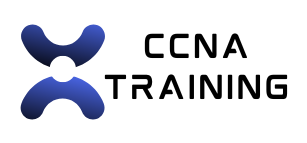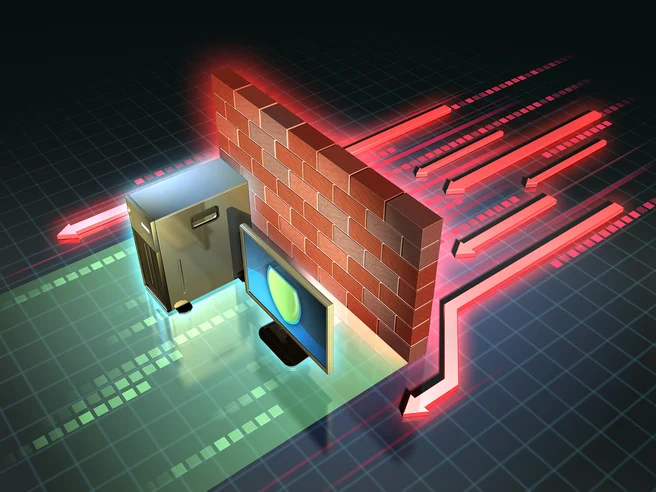The Cisco Certified Network Associate (CCNA) certification is a widely recognized credential for IT professionals who are interested in networking and want to advance their careers. The CCNA certification validates the ability to install, configure, operate, and troubleshoot medium-sized routed and switched networks. It also covers the fundamentals of network security, wireless networking, and routing and switching technologies. The certification is designed to provide a solid foundation in networking and is a stepping stone for more advanced certifications such as the CCNP and CCIE.
To obtain the CCNA certification, candidates must pass one exam, which covers a wide range of topics including networking fundamentals, TCP/IP and OSI model, routing and switching, subnetting and IP addressing, VLANs and inter-VLAN routing, troubleshooting, and network management. The exam is challenging and requires a deep understanding of networking concepts and technologies. The CCNA certification is highly valued in the industry and can open up many career opportunities for IT professionals.
Key Takeaways
- CCNA certification is a valuable credential for networking professionals, demonstrating knowledge and skills in networking fundamentals, routing and switching, subnetting, VLANs, and troubleshooting.
- Networking fundamentals cover the basics of networking, including network topologies, protocols, and devices, and are essential for understanding more advanced networking concepts.
- TCP/IP and OSI model are foundational to understanding how data is transmitted over networks, and knowledge of these models is crucial for troubleshooting and managing network issues.
- Routing and switching are key components of network infrastructure, and understanding how routers and switches work is essential for designing and managing networks.
- Subnetting and IP addressing are important for efficiently allocating and managing IP addresses within a network, and are essential for network administrators and engineers.
Networking Fundamentals
Networking fundamentals are the building blocks of any IT infrastructure. It is essential for IT professionals to have a solid understanding of networking fundamentals in order to design, implement, and troubleshoot networks. Networking fundamentals cover a wide range of topics including network topologies, network devices, network protocols, and network services. Understanding these concepts is crucial for anyone pursuing a career in networking.
Network topologies refer to the physical or logical layout of a network. Common network topologies include bus, star, ring, mesh, and hybrid. Network devices are the hardware components used to connect computers and other devices to a network. These devices include routers, switches, hubs, bridges, and gateways. Network protocols are the rules and conventions used for communication between devices on a network. Examples of network protocols include TCP/IP, UDP, HTTP, FTP, and SNMP. Network services are the applications and processes that run on a network to provide specific functionality such as file sharing, email, web hosting, and remote access.
TCP/IP and OSI Model
The TCP/IP (Transmission Control Protocol/Internet Protocol) and OSI (Open Systems Interconnection) model are two fundamental frameworks used to understand how data is transmitted over a network. The TCP/IP model is a concise version of the OSI model and is widely used in modern networks. It consists of four layers: the application layer, transport layer, internet layer, and network access layer. Each layer has its own set of protocols and functions that enable communication between devices on a network.
The OSI model is a seven-layer framework that provides a more detailed understanding of the networking process. The seven layers are the physical layer, data link layer, network layer, transport layer, session layer, presentation layer, and application layer. Each layer has specific responsibilities and interacts with adjacent layers to ensure that data is transmitted accurately and efficiently.
Understanding the TCP/IP and OSI model is essential for IT professionals as it provides a systematic approach to troubleshooting network issues and designing new networks. It also helps in understanding how different networking devices and protocols work together to enable communication between devices on a network.
Routing and Switching
| Category | Metric | Value |
|---|---|---|
| Routing | Routing Table Size | 100,000 entries |
| Switching | Switching Capacity | 1 Tbps |
| Routing | Routing Protocol | OSPF |
| Switching | Switching Latency | Less than 1 microsecond |
Routing and switching are two fundamental functions of network devices such as routers and switches. Routing is the process of forwarding data packets from one network to another based on their destination IP addresses. Routers are responsible for making decisions about the best path for data to travel through a network. Switching, on the other hand, is the process of forwarding data packets within the same network based on their MAC addresses. Switches are used to create local area networks (LANs) by connecting multiple devices within the same network.
Understanding routing and switching is crucial for IT professionals as it forms the backbone of any network infrastructure. It is important to know how routers and switches work together to ensure that data is transmitted efficiently and securely across a network. Routing protocols such as RIP, OSPF, EIGRP, and BGP are used to determine the best path for data to travel through a network. Switching technologies such as VLANs (Virtual Local Area Networks) and STP (Spanning Tree Protocol) are used to segment networks and prevent loops in Ethernet networks.
Subnetting and IP Addressing
Subnetting is the process of dividing a large network into smaller subnetworks or subnets. It is used to improve network performance, security, and manageability by creating smaller broadcast domains within a larger network. Subnetting also helps in conserving IP addresses by allocating them more efficiently. IP addressing is the process of assigning unique IP addresses to devices on a network so that they can communicate with each other.
Understanding subnetting and IP addressing is essential for IT professionals as it enables them to design and manage IP networks effectively. Subnetting requires a good understanding of binary arithmetic and how IP addresses are structured. It also involves knowing how to calculate subnet masks, subnet IDs, broadcast addresses, and host ranges for different subnets. IP addressing involves knowing the different classes of IP addresses (Class A, Class B, Class C) and how they are used to assign IP addresses to devices on a network.
VLANs and Inter-VLAN Routing

VLANs (Virtual Local Area Networks) are used to segment a single physical network into multiple logical networks. This allows for better traffic management, improved security, and simplified network administration. VLANs are created by assigning ports on switches to different VLANs so that devices within the same VLAN can communicate with each other but not with devices in other VLANs. Inter-VLAN routing is the process of enabling communication between devices in different VLANs by using a router or layer 3 switch.
Understanding VLANs and inter-VLAN routing is important for IT professionals as it allows them to design flexible and scalable networks. VLANs help in reducing broadcast traffic by creating smaller broadcast domains within a larger network. They also provide better security by isolating sensitive data or critical systems in separate VLANs. Inter-VLAN routing enables communication between devices in different VLANs without the need for physical connections between them.
Troubleshooting and Network Management
Troubleshooting is an essential skill for IT professionals as it allows them to identify and resolve issues that may arise in a network. Troubleshooting involves using various tools and techniques to diagnose problems such as connectivity issues, slow performance, or security breaches. Network management involves monitoring and maintaining the health and performance of a network by using tools such as SNMP (Simple Network Management Protocol) or NMS (Network Management System).
Understanding troubleshooting and network management is crucial for IT professionals as it enables them to keep networks running smoothly and efficiently. Troubleshooting requires good analytical skills and a deep understanding of networking concepts in order to identify the root cause of issues. Network management involves knowing how to monitor network devices, analyze performance metrics, configure alerts, and perform regular maintenance tasks to ensure that the network is secure and reliable.
In conclusion, the CCNA certification covers a wide range of topics that are essential for IT professionals who want to pursue a career in networking. Understanding networking fundamentals, TCP/IP and OSI model, routing and switching, subnetting and IP addressing, VLANs and inter-VLAN routing, troubleshooting, and network management is crucial for anyone who wants to design, implement, or troubleshoot networks effectively. The CCNA certification provides a solid foundation in networking and opens up many career opportunities for IT professionals in the industry.
FAQs
What is CCNA?
CCNA stands for Cisco Certified Network Associate. It is a certification program offered by Cisco Systems that validates the ability to install, configure, operate, and troubleshoot medium-size routed and switched networks.
What are the requirements for obtaining CCNA certification?
There are no formal prerequisites for taking the CCNA exam, but it is recommended that candidates have a good understanding of networking fundamentals and basic IP addressing.
What topics are covered in the CCNA exam?
The CCNA exam covers a wide range of topics including network fundamentals, network access, IP connectivity, IP services, security fundamentals, and automation and programmability.
What are the benefits of obtaining CCNA certification?
CCNA certification can lead to improved job prospects, higher salary potential, and increased credibility in the field of networking. It also provides a solid foundation for further Cisco certifications.
How long is CCNA certification valid for?
CCNA certification is valid for three years. After three years, individuals can recertify by passing the current CCNA exam or by passing a higher-level Cisco certification exam.














